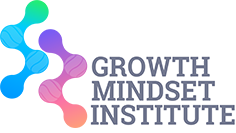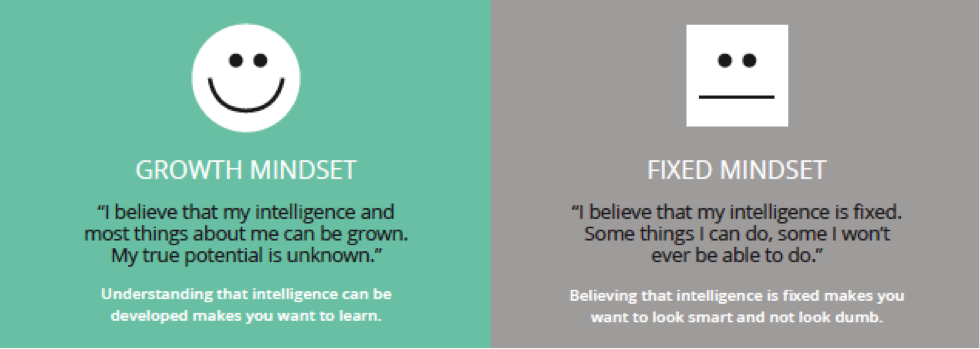Growth Mindset Definition
The concept of a growth mindset was developed by psychologist Prof Carol Dweck and popularized in her book, Mindset: The New Psychology of Success. In her book she provides a growth mindset definition.
Dweck’s work identified that people adopt one of two types of mindsets: “fixed” and “growth.” In a fixed mindset, people believe their basic qualities, like their intelligence or talent, are simply fixed traits. They believe that talent alone creates success. Whereas, people with a more persistent growth mindset believe that they can substantially change their intelligence and personality with effort.
Dweck’s research suggests that when people adopt a FIXED MINDSET — the belief that they are either smart or talented or not and there is no way to change this — may learn less than they could while also shying away from challenges. Dweck’s findings also suggest that when people with fixed mindsets fail at something, as we all inevitably will, they tend to tell themselves they can’t or won’t be able to do it (“I just can’t learn to play music”), or they make excuses to rationalize the failure (“I would have passed the test if I had a better teacher”).
Alternatively, in a GROWTH MINDSET, people believe that their most basic abilities can be developed through dedication and hard work—brains and talent are just the starting point. This view creates a love of learning and a resilience that is essential for great accomplishment. People who embrace growth mindsets—the belief that they can become smarter if they work hard and persevere—may learn more and view challenges and failures as opportunities to improve and grow.
We Are All Mixture of Growth and Fixed
Many years ago we believed that people had either a fixed or a growth mindset. We now recognise that we are all a mixture of both. There are times when we believe we have enormous potential and we overcome set backs and see failure as a necessary part of getting better. While at other times we believe that our potential is limited by our deficiencies. When we adopt this view we give up at the first obstacle and let failure define us.
The old dichotomy lead people to label others as being either fixed or growth. Teachers holding this belief may use mindset as reason for a student failing to engage in the classroom. For example they may say, “I can’t teach you math because you have a fixed mindset.”
We now recognise this as a false growth mindset. It lead Prof Dweck to revise her research to help people to recognise that we aren’t one or the other. We will never be 100% growth. Instead it’s a continuum and our goal should be to develop a more persistent growth mindset.
As she states in her latest book, “You don’t get a growth mindset by proclamation.” It takes effort to recognise and manage our fixed mindset and develop strategies to help shift us out of our fixed mindset thinking.
We all need to recognise that developing a growth mindset is a journey filled with setbacks and challenges. The good news is that with practice we can learn to recognise our fixed mindset and shift our thinking back toward growth and learning.
This is especially important for leaders as discussed in this post Growth mindset leaders have more engaged teams.

